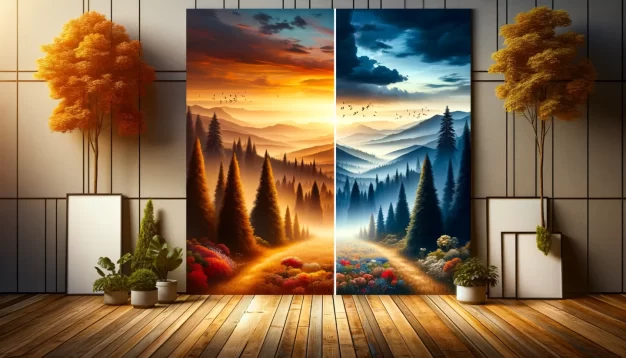Using Balance & Visual Weight in your compositions
Master photo balance with our guide on composition, symmetry, and visual weight.

Introduction to Balance in Photography
Balance is a cornerstone of photographic composition, vital for creating visually appealing images. It involves arranging elements so that no single part of the work overpowers another. A balanced photo feels harmonious, intentional, and pleasing to the eye.
Understanding Visual Balance
Visual balance is the perceived equilibrium in a photo. It’s an art of ensuring the elements within the frame contribute to an overall sense of stability. It’s not merely about symmetry or placing objects evenly; it’s about the visual weight that components carry.
Importance of Balance in Composition
A balanced composition engages viewers, guiding their eyes across the image and conveying the intended mood or message. It creates a sense of order and can make even complex scenes appear accessible and understandable.
Types of Balance in Photography
Symmetrical Balance
Symmetrical balance is achieved when both halves of an image hold equal weight. Whether it’s a reflection in water or a centered architectural element, symmetry provides a sense of calm and formality.
Asymmetrical Balance
Asymmetrical balance is the placement of non-identical objects that still equalize the visual weight. It’s like a chess game where different pieces, each with different values, create equilibrium on the board.
Color Balance
Color balance refers to the distribution and harmony of colors within an image. Warmer tones can be balanced with cooler shades, ensuring no single hue dominates unless intended.
Tonal Balance
Tonal balance is about the distribution of light and dark elements. It’s crucial for black and white photography, where contrast is vital for creating depth and interest.
Techniques to Achieve Balance
The Rule of Thirds
The rule of thirds involves dividing the frame into a grid of nine equal segments. Placing key elements along these lines or at their intersections can create a balanced composition.
Use of Leading Lines
Leading lines guide the viewer’s eye through the image and can be used to balance the composition by drawing attention to different areas of the frame.
Playing with Textures and Patterns
Textures and patterns can add balance by providing a visual counterpoint. For instance, a smooth surface can be balanced by a rough-textured element.
Juxtaposition in Composition
Juxtaposition involves placing contrasting elements within the same frame. This can create a dynamic equilibrium that resonates with viewers.
Balancing Elements in Post-Processing
Cropping for Better Balance
Cropping can dramatically alter the balance of a photo. By trimming away distracting elements, you can refocus the viewer’s attention and create a more harmonious composition.
Adjusting Colors and Contrast
Manipulating colors and contrast can enhance balance. Brightening or darkening areas, or tweaking saturation, can redistribute the visual weight.
Using Vignettes to Focus Attention
Vignettes darken the edges of a frame, naturally drawing the eye toward the center. This can be a subtle way to achieve balance by focusing attention on the subject.
Real-World Examples
Analyzing Balance in Iconic Photographs
Iconic photos often illustrate balance masterfully. Analyzing such images reveals how photographers use various elements to create a visual equilibrium.
Before and After Case Studies in Balancing
Case studies of before and after images can demonstrate how balance transforms a photograph from mundane to compelling.
Concluding Thoughts on Balanced Photography
Summary of Key Takeaways
Balance is essential for compelling photography. Whether through symmetry, color, tonality, or post-processing, it’s about achieving visual harmony.
Encouragement to Experiment with Balance
Photographers should embrace imbalance to understand balance. Experimenting leads to discovery, and within that process lies the art of photography. Occasionally, breaking balance rules may result in a spectacularly unexpected masterpiece.